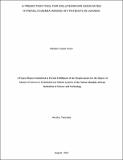| dc.description.abstract | The initiation of Dolutegravir based antiretroviral therapy has provided a potent treatment option
for persons living with human immunodeficiency Virus (PLHIV). However, clinical research has
shown overwhelming evidence that use Dolutegravir (DTG) results into consequential
hyperglycaemia. The incidence and prevalence rates of Dolutegravir associated hyperglycaemia
among PLHIV are unknown. Therefore, identification of patients susceptible to dolutegravir
associated hyperglycaemia is critical to lessening morbidity and mortality associated with
uncontrolled high blood glucose level among patients on antiretroviral therapy (ART) and care.
The current procedures practiced in screening for hyperglycemia among PLHIV being switched to
DTG and DTG Associated Hyperglycemia related literature were appraised. Various machine
learning classification algorithms were employed to come up with the most appropriate model. The
purpose of the study was to develop an efficient DTG associated hyperglycaemia Screening tool
for treatment experienced PLHIV being switched to DTG in Uganda. The study found Extreme
Gradient Boost Classification model as the best with performance and evaluation metrics as
follows: model accuracy is 0.99, probability to classify positives is 0.87, precision probability for
predicting positives is 0.67, Area under the receiver operating Characteristic curve is 0.90, Area
under a precision, recall curve as 0.86, F1 score is 0.76, and Cohen Kappa score as 0.72 inter alia.
Therefore, the study recommends the adoption and use of the DTG associated hyperglycaemia
screening tool while switching HIV treatment experienced patients to a DTG based regimen. This
is because the world over is using Machine learning tools to support Medicare. The researcher also
suggests stratifying the data by gender and build DTG associated prediction models for women and
men separately because men are not affected in any by variables of pregnancy and post-menopausal
phase like women. The research proses lessening of bureaucratic tendencies and high charges
levied on research protocols and data acquisition as a way of promoting these innovative studies
among others. | en_US |

